In the heart of Frankfurt (Oder) stands the former main parish church St.Marien. With its glass bible, it is considered a landmark of the city and is now used as a socio-cultural centre.
The first St. Mary’s Church was built in 1253, not long after the town was founded. Over the next few centuries, this building was extended further and further. For example, from 1360 a new choir gallery was built, in the 15th century the nave was extended into a five-nave church building and around 1521/22 the last extension of the church building took place with the construction of the new sacristy. Over the years, a beautiful brick church with two towers was built.
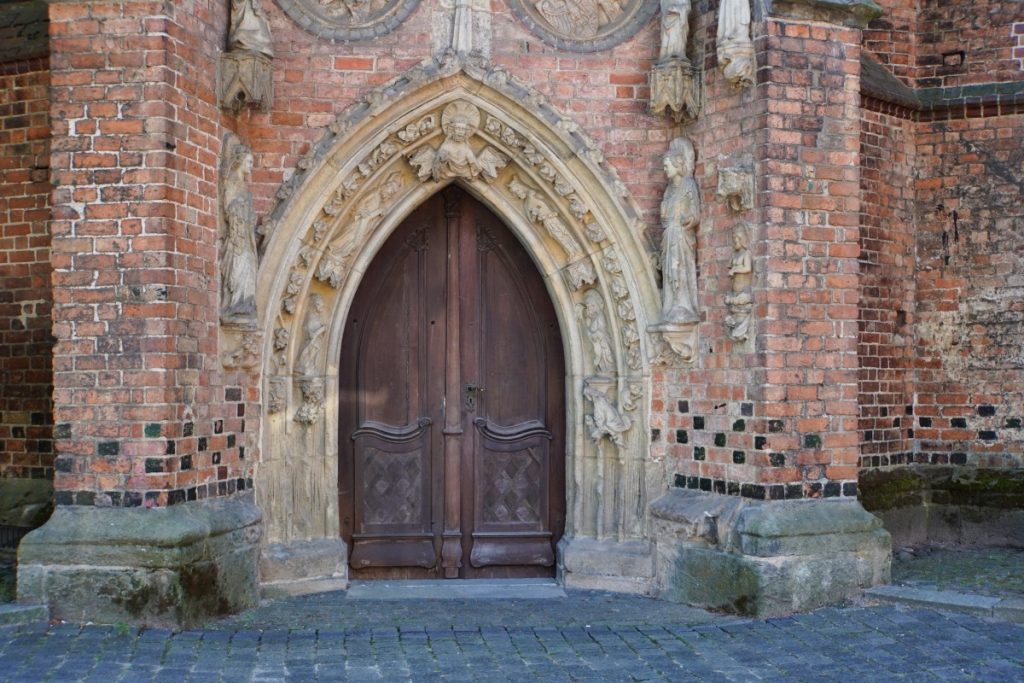
In May 1826, the south tower of the church collapsed and was not rebuilt. This was not to be the only damage. In the Second World War, the church was also severely damaged during the destruction of Frankfurt’s city centre. What remained was a ruin that continued to decay despite attempts to secure it in an emergency.
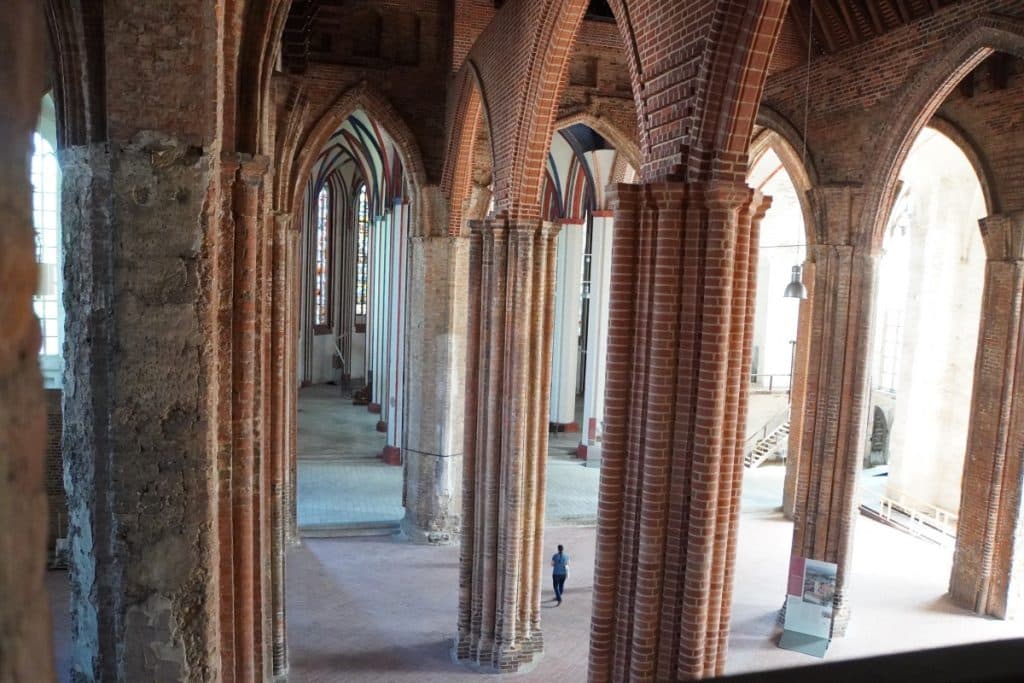
The parish succeeded in building the sacristy and the martyr’s choir with its own funds in 1958. The altar could be placed here and services could be celebrated in the warmer seasons. In 1974, the congregation signed a 99-year lease with the city. The city took on the obligation to restore and develop the ruin so that it could be used for social purposes.
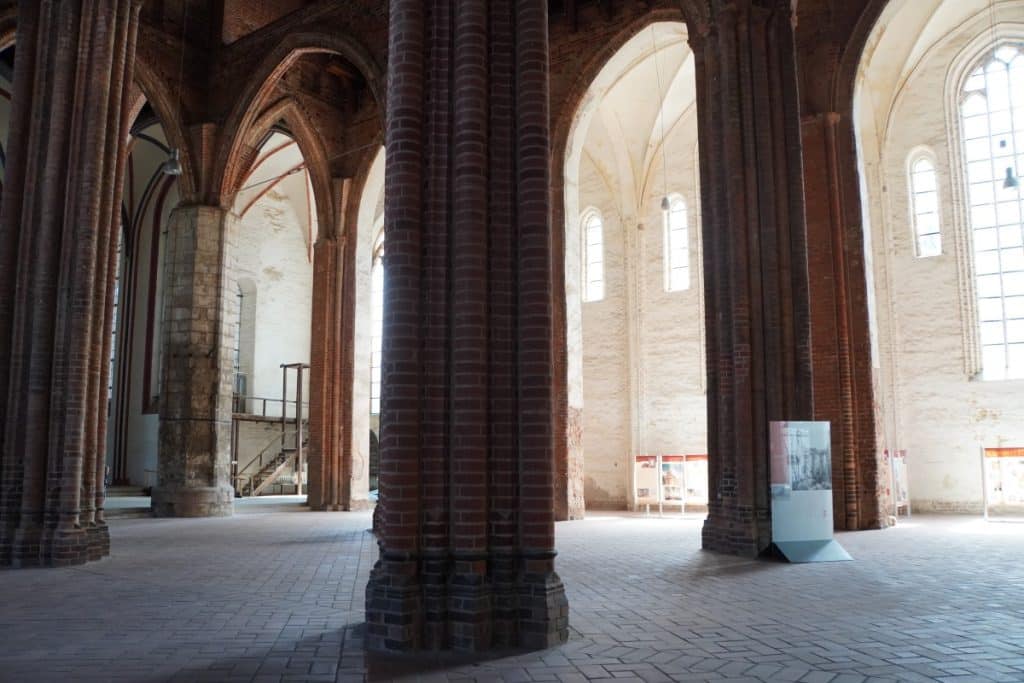
After reunification, the reconstruction of the church could continue. In 1998, the nave was given a 21-metre-high wooden roof truss over the choir and nave, and the north tower was repaired. However, the church treasures, such as the Marian altar and epitaphs, were not brought back into the church. They are still in the Sankt-Gertrauden-Kirche in Frankfurt (Oder).
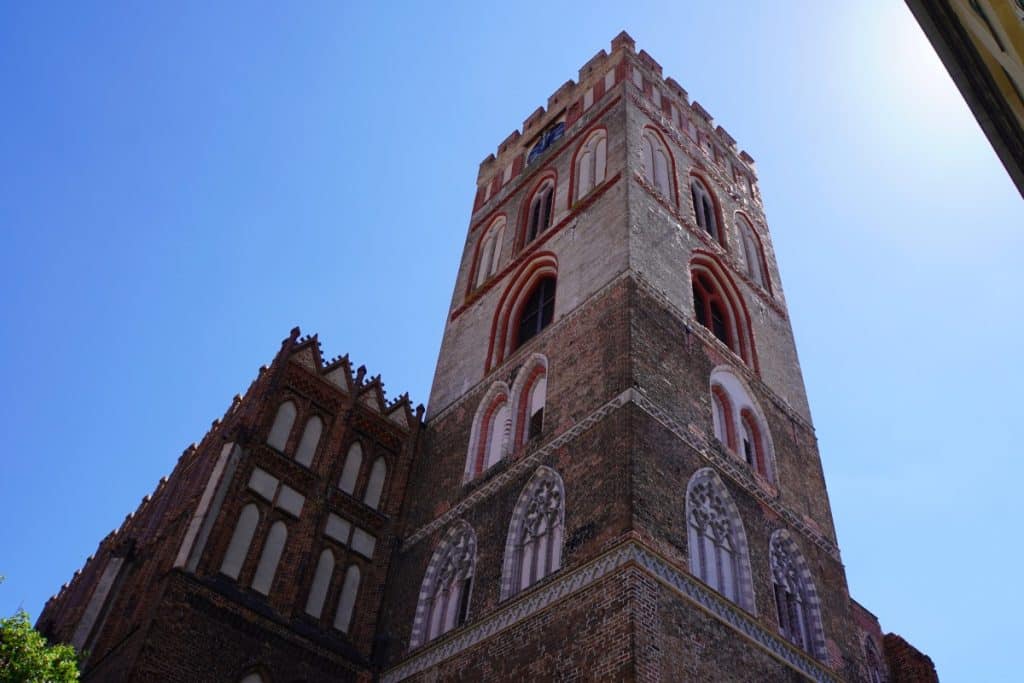
Tower ascent
Actually, we only wanted to visit the church because we were drawn to the 67-metre-high tower. From there you have a 360-degree view of the city and the surrounding area.
After we had paid the entrance fee for the ascent, we were taken to the door behind which there were now 237 steps up into the tower. The first steps led up a narrow, well-trodden stone spiral staircase, which was replaced by a wooden staircase on a small intermediate platform. This also led us past the church bells.
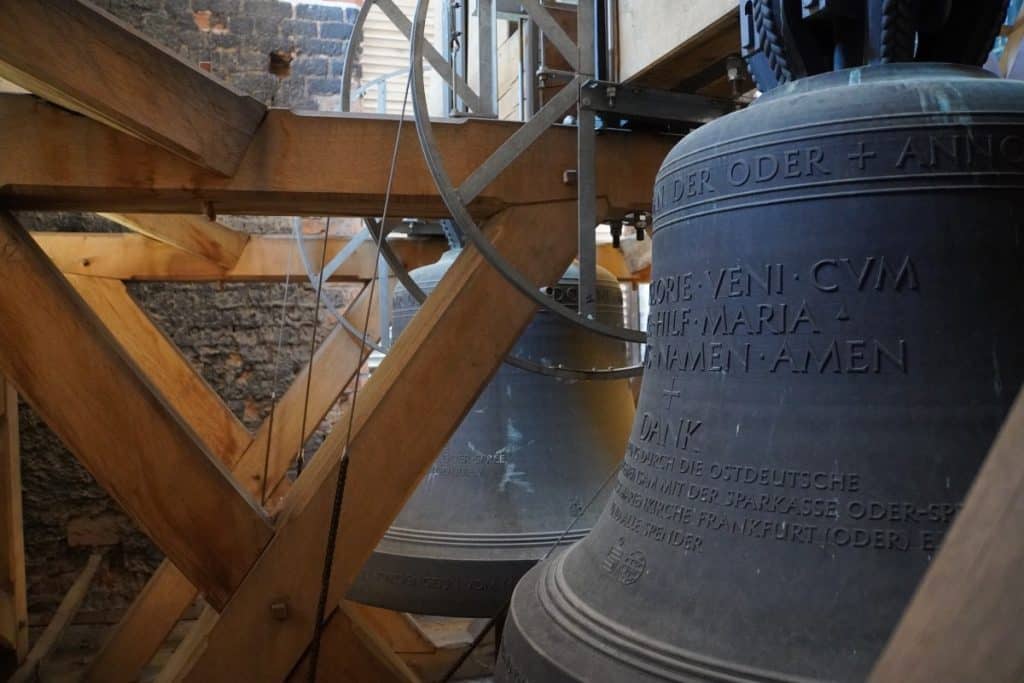
Originally, the Frankfurt church had 6 bells, which were cast around 1400. Two bells were taken to Hamburg in 1942. The middle bell, Maria, escaped being melted down and now hangs in the church tower again after being repaired. Four bells were lost in the destruction of the church. Three of them have already been rebuilt in a bell foundry and hung in the church again.
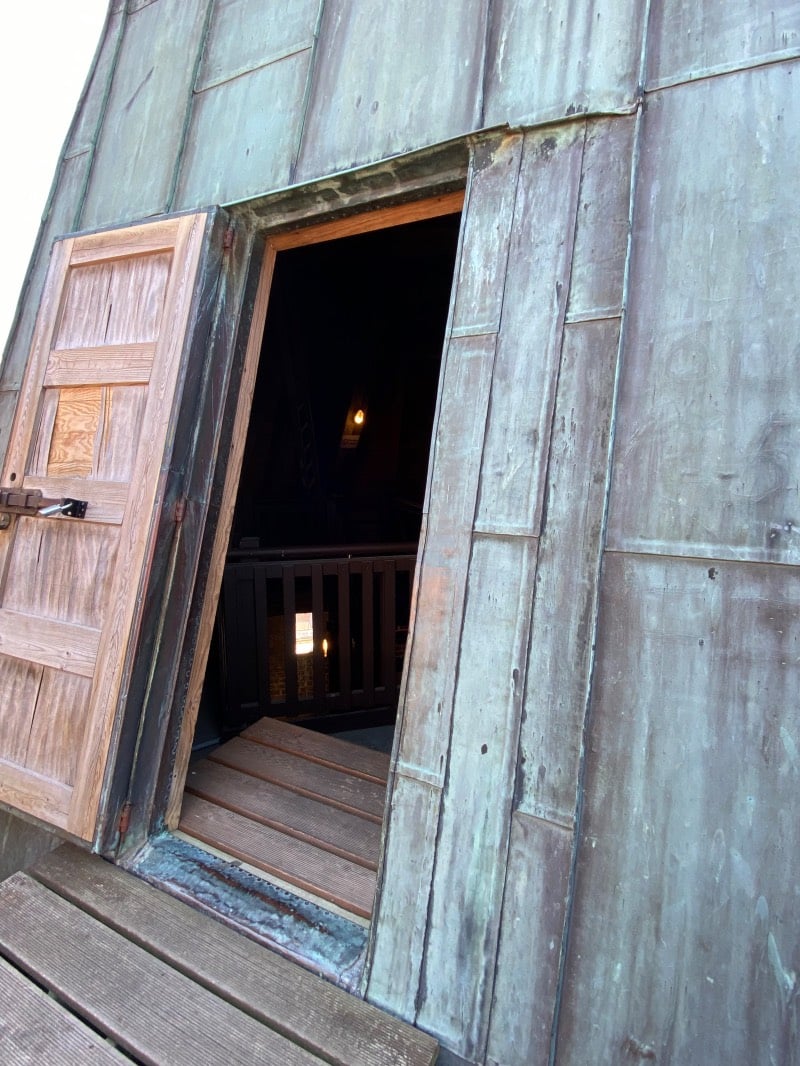
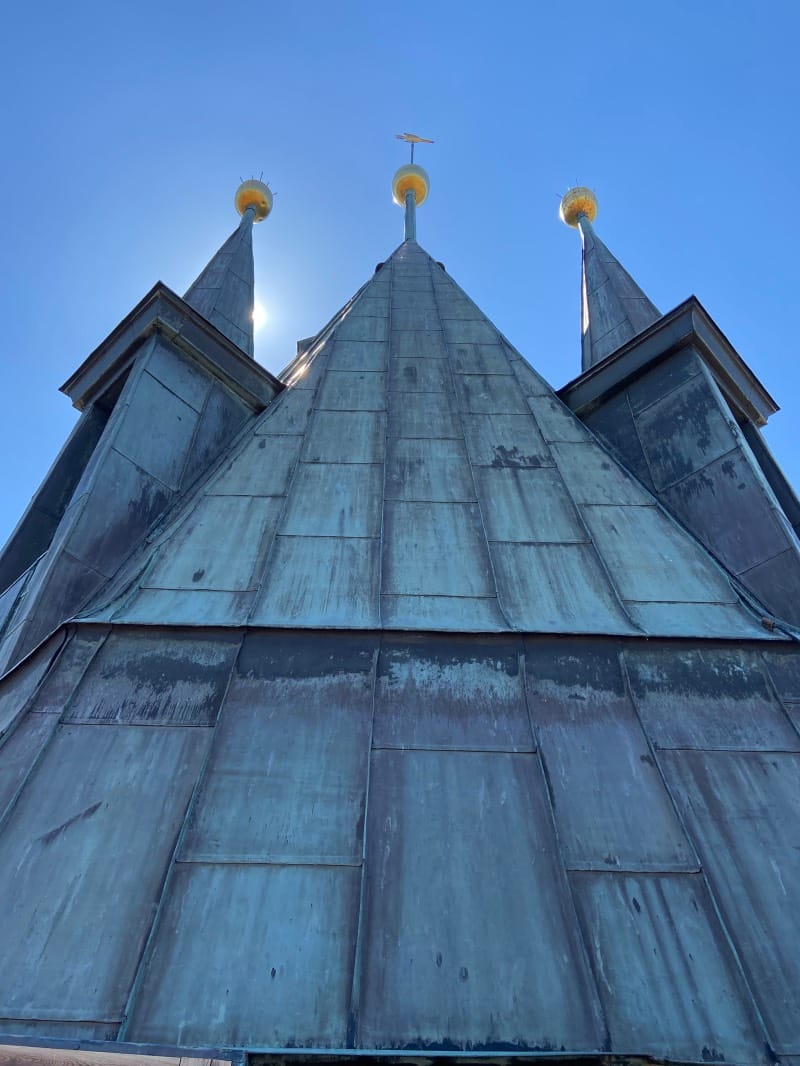
Once at the top, we had to open another door and could then step onto the narrow tower walkway. From there you have a great view of the city, across the Oder and into Poland. The climb is very worthwhile, we especially liked the view over the Oder.
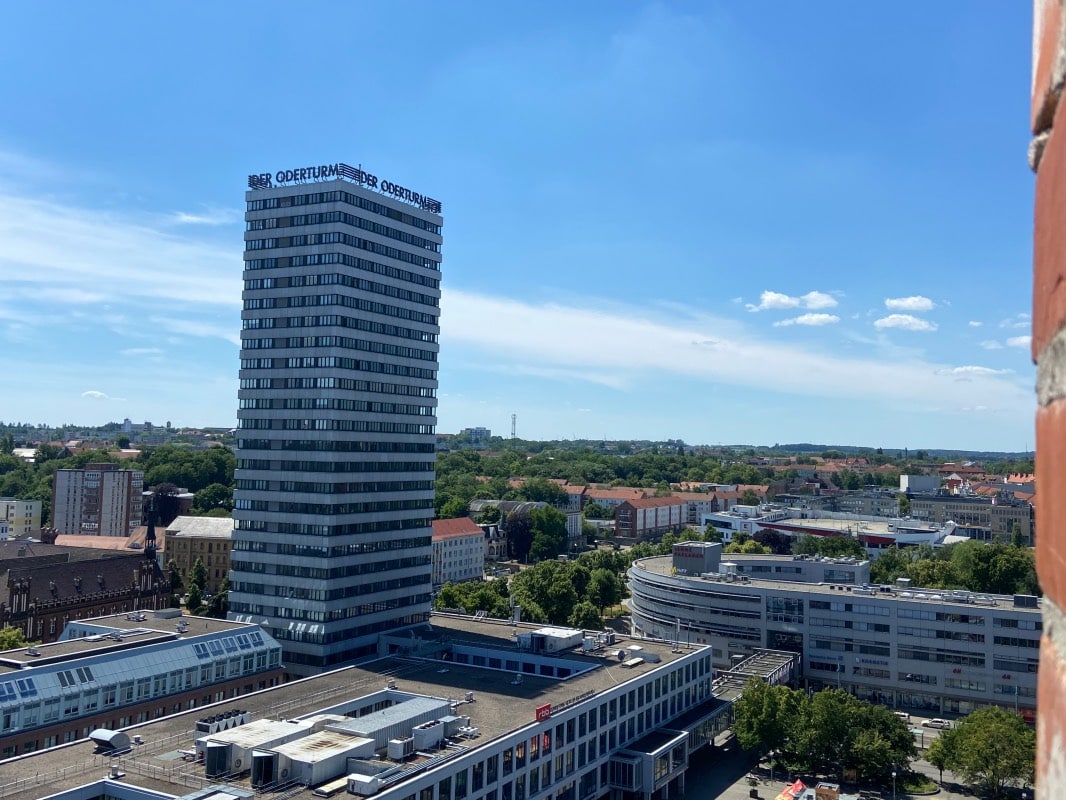

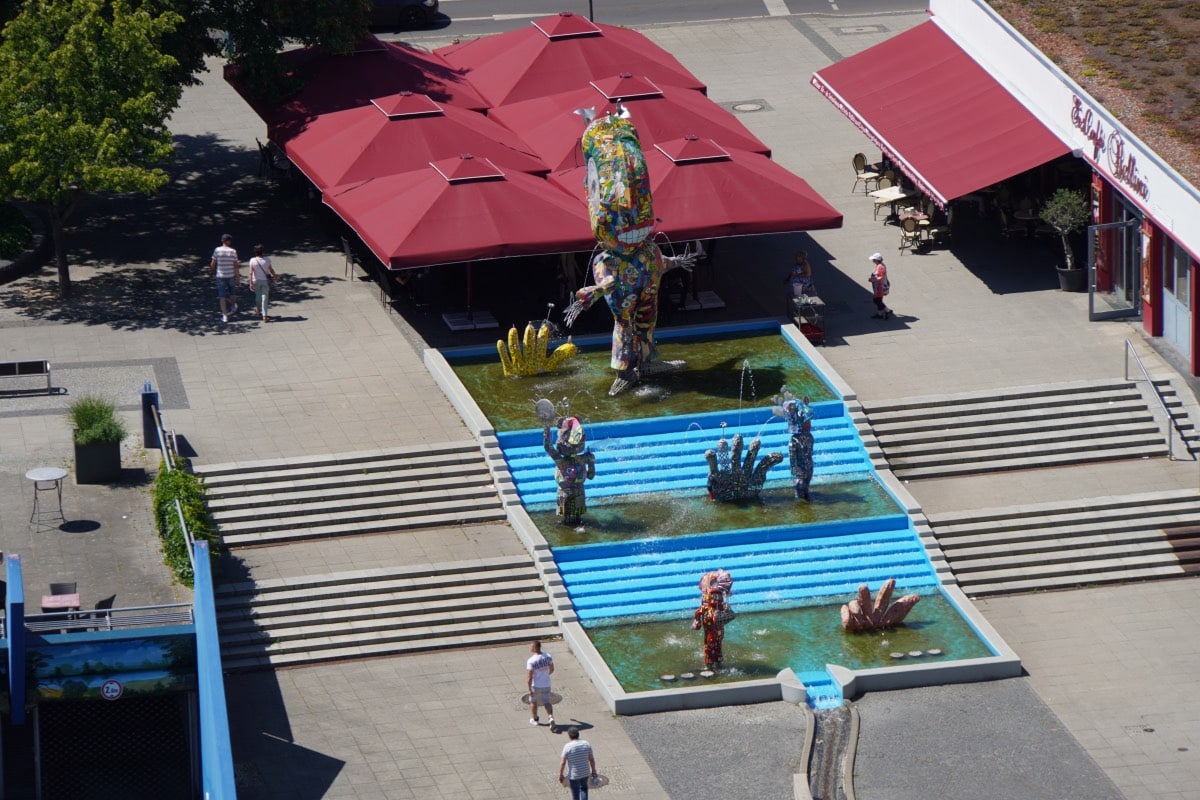
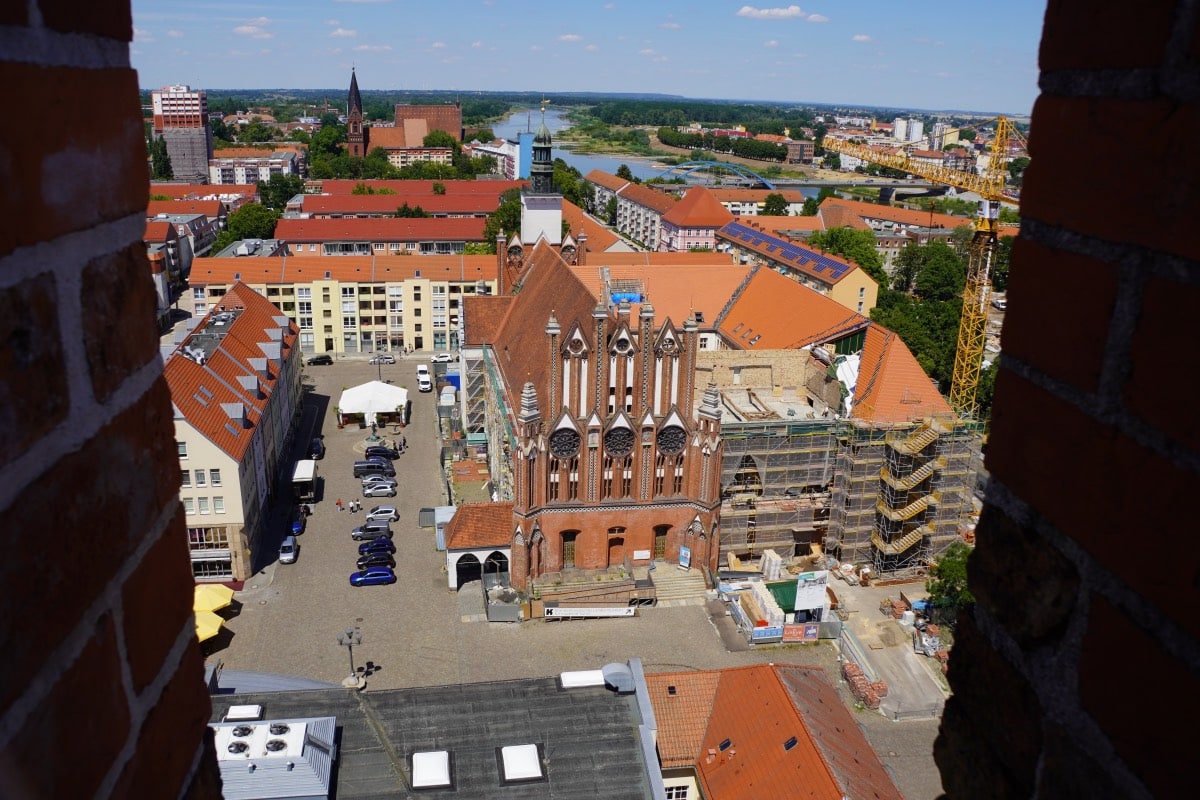
Mayoral coffins
Right next to the entrance door of the church, one can enter a chapel-like room located below the north tower and above an old burial chamber. The room is not large and one’s gaze automatically falls on the two magnificent copper coffins with golden ornaments. But you should also take a look at the walls. Here, old wall drawings have been uncovered.
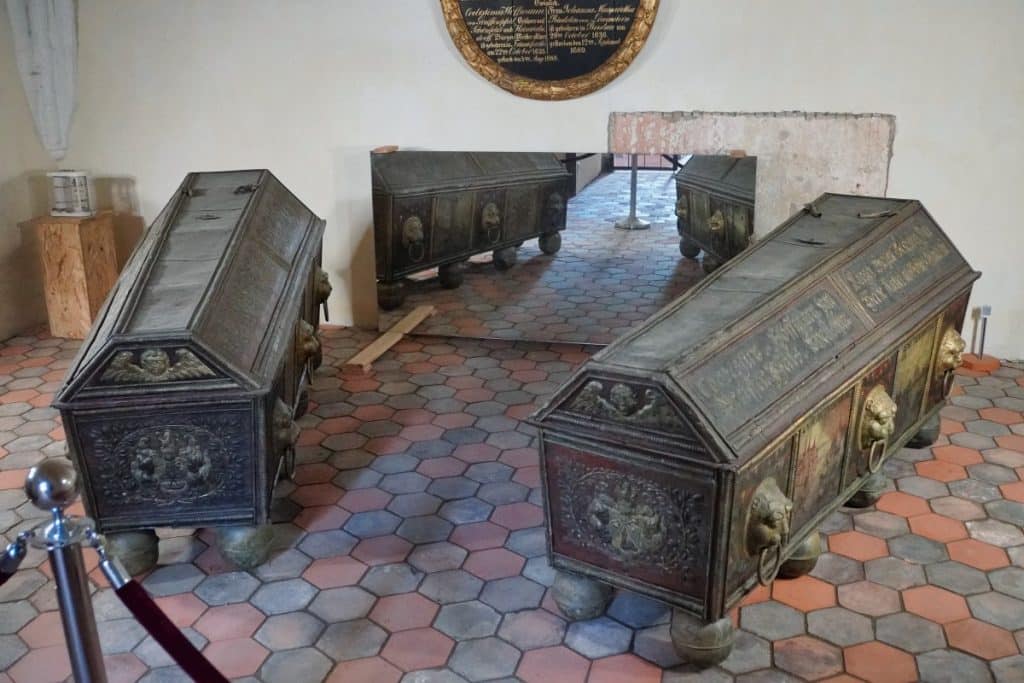
At the end of the 17th century, the mayor and councillor Cölestin Hoffmann von Greiffenpfeil and his wife Johanna Margaretha were buried in the magnificent coffins.
A little tip – when you step out of the small chapel, be sure to look at the church wall above the entrance. There you can see the image of a devil-like figure. Why it is there… I don’t know.
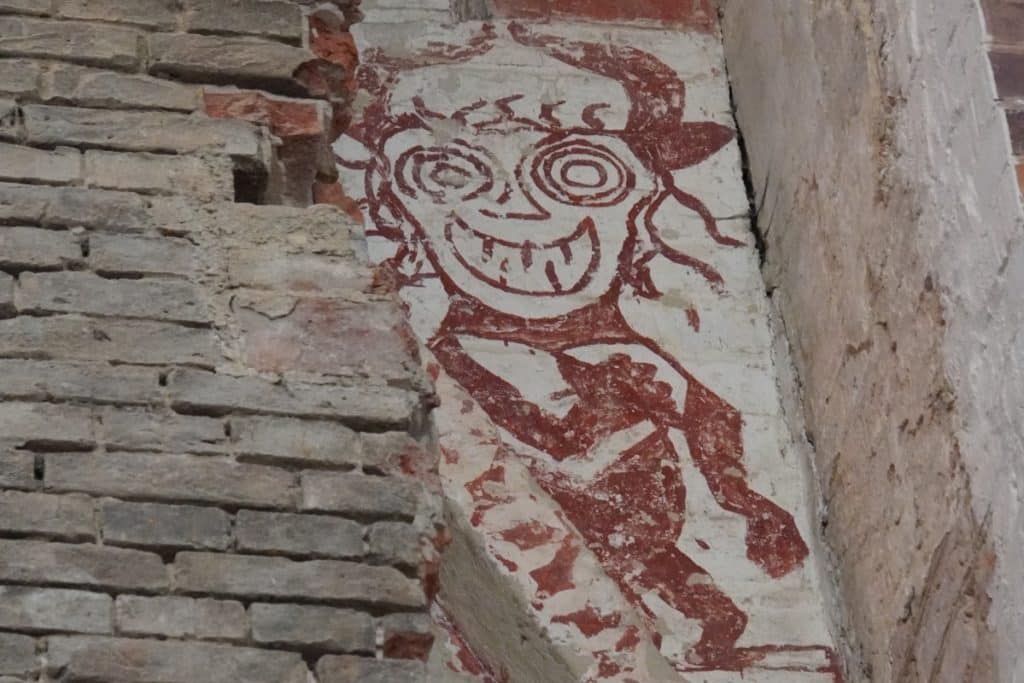
The Glass Bible of St. Mary’s Church
Something very special that I have never seen before is the glass Bible in the church. Three large leaded glass windows, dating from 1360-1370, depict this Bible.
The citizens of the town had 117 windows made in the size of 83 x 43 cm in the Gothic style, thus giving their church something unique. Each window depicts an area of the Bible, such as the creation story, the building of Noah’s Ark, the life and death of Christ and the legend of the Antichrist.
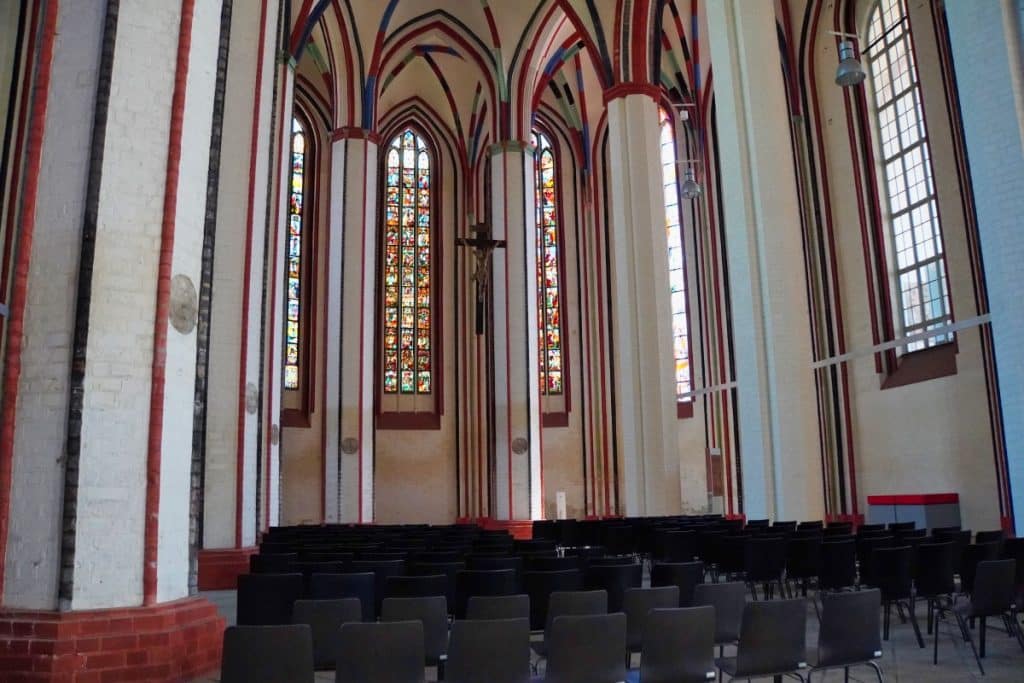
Fortunately, the windows were completely removed from the church in 1941 and thus saved from destruction. After they had been safely stored, they began to photograph and document the pictures in black and white in 1943. In 1945, they were brought to the Neue Palais in Potsdam. From there they went to Leningrad as looted art and were considered “lost” at the end of the war.
In 1991, the first indications of the whereabouts of the pictures emerged and from 1994 onwards, efforts were made to get them back. It was not until 2002 that 111 of the 117 pictures were returned to Frankfurt (Oder). With the help of the black-and-white photographs, they were restored and in 2005 they finally hung in the church. Shortly afterwards, the missing pictures were found in the Pushkin Museum in Moscow. Long negotiations finally brought success, the pictures came back to Frankfurt in 2008 and have been on display again in St Mary’s Church since 2009.
Glass Bible: Creation Window
The left window of the glass Bible is called the “Creation Window”. The individual pictures tell the story of the beginning of the world, as it is reported in the 1st Book of Moses. However, the painter of the windows deviates a little from the written story. He put a book in the Creator’s lap and then let him do his 6-day work. Other pictures tell about Paradise, the creation of Adam and Eve and of course the expulsion of the two from the Garden of Eden.
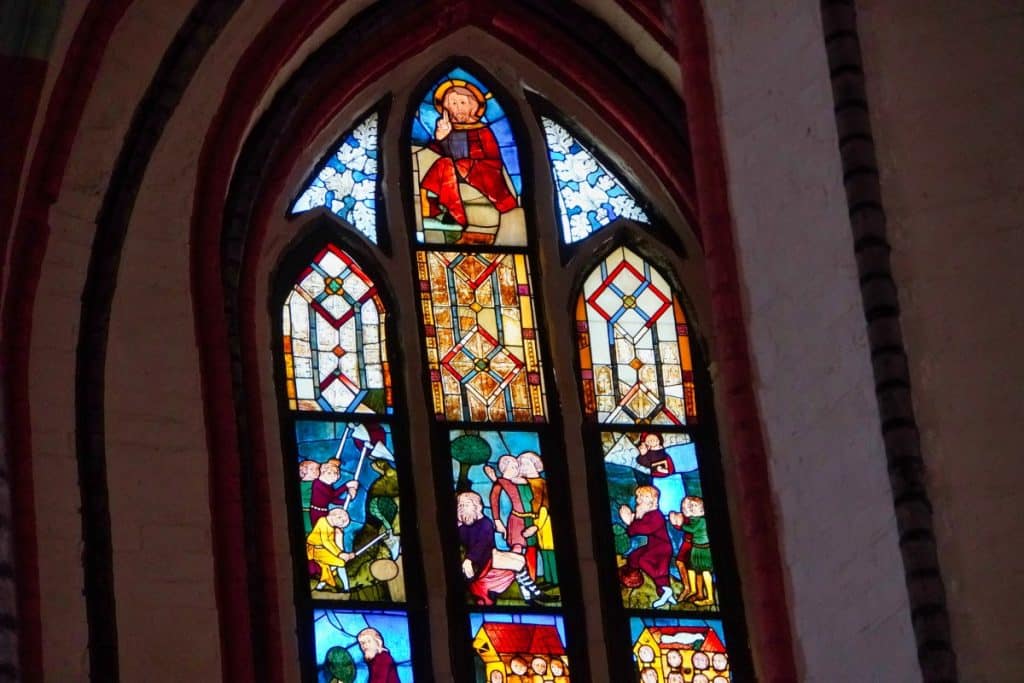
This is followed by the story of Cain and Abel, the increasing wickedness and violence of man and God’s desire to destroy them in a great flood. This is followed by the story of Noah and the ark.
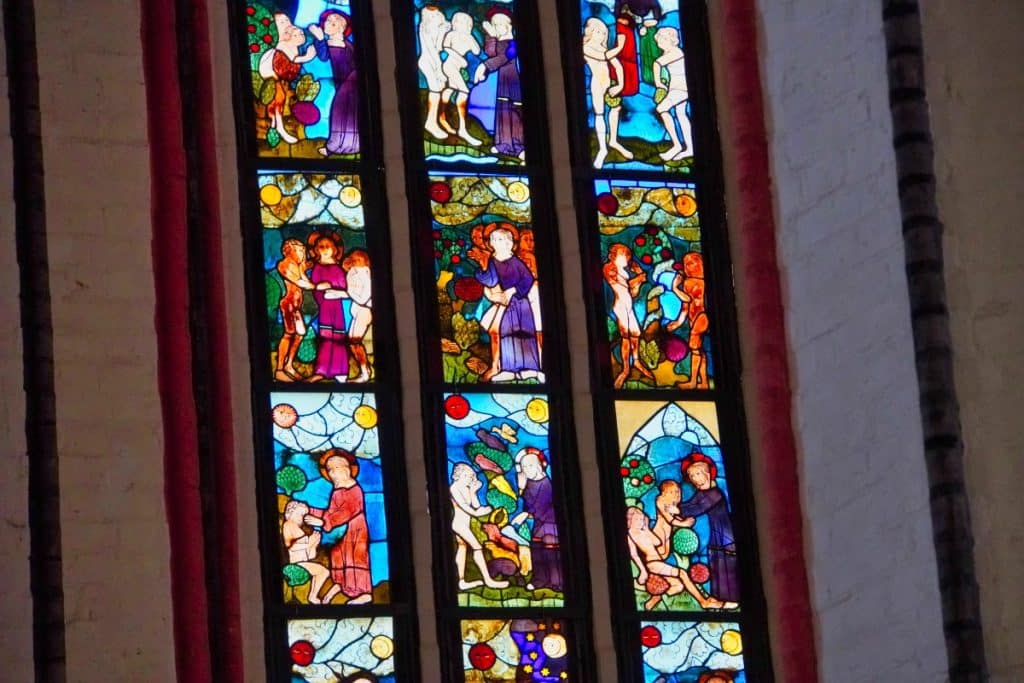
The Christ Window
The middle window of the glass Bible is called the Christ Window. Here 11 scenes of Christ’s redemptive work and the story of the birth and ascension of Jesus are depicted.
It is striking that images from the New Testament narrative are accompanied by two images from the Old Testament.
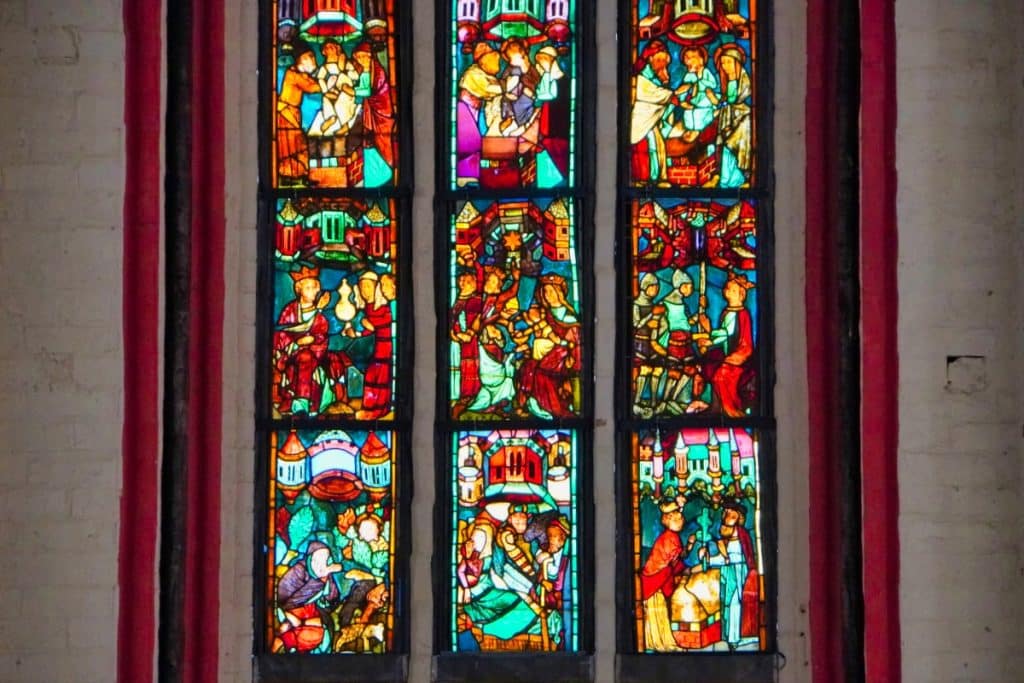
If you look at the windows, you will discover, for example, the birth of Jesus, the Magi, the baptism of Jesus in the Jordan, the Last Supper, Jesus carrying the cross, the crucifixion and the Ascension (looking from bottom to top). The top window shows Christ sitting in heaven with his mother Mary.
The Antichrist Window of the Glass Bible
Very unusual for a church is the right window, the Antichrist window.
The painter of these windows shows pictures in two rows on the theme of the Last Judgement. In addition, he presents the legend of the Antichrist, thus depicting what happens beforehand according to the testimonies of Holy Scripture.
He shows how the opponents of Christ proceed in order to unsettle the believers and to dissuade them from faith. In doing so, he portrays the Antichrist as friendly, who only feigns his faith and is directed by the devil standing in the background.
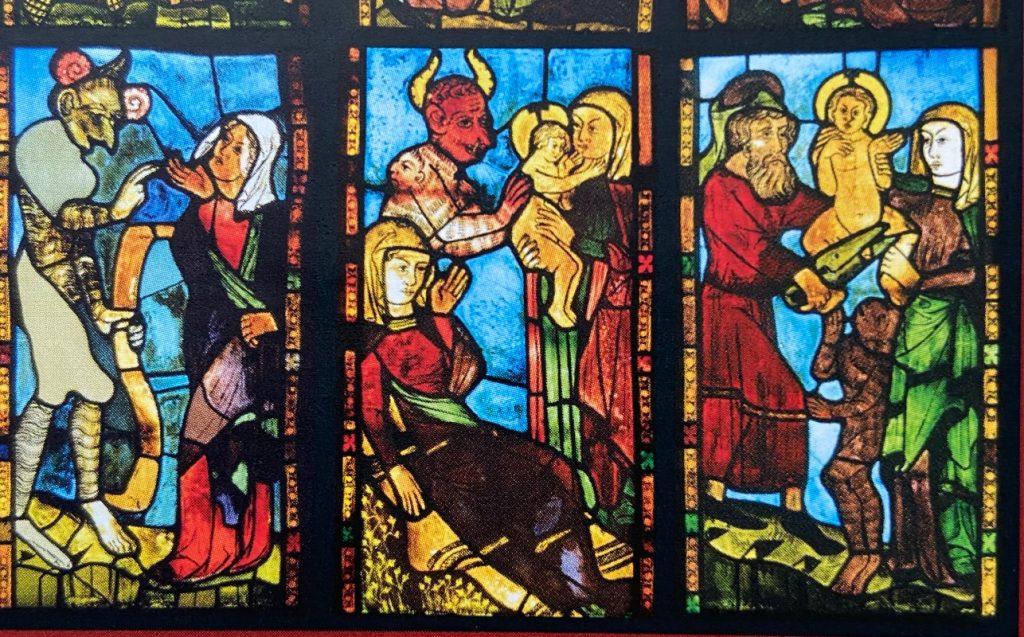
The last three pictures of the glass Bible in the bottom row, for example, show a pregnant woman. When the light shines through the window, you can see the unborn child in the womb with little devil horns. The middle window shows the birth of the Antichrist and the right window the circumcision with a huge pair of scissors.
Address:
St.Marienkirche
Oberkirchplatz 1
15230 Frankfurt (Oder)
Opening hours:
October – April: 10-16 h
May – September: 10-18 h
closed: 24.12.
Admission fees:
Church: free of charge
Tower ascent: €3.50
Audio guide: €4.50
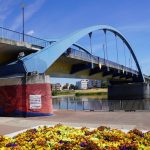
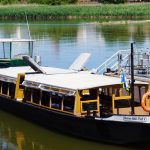
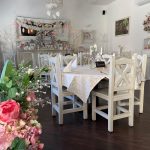
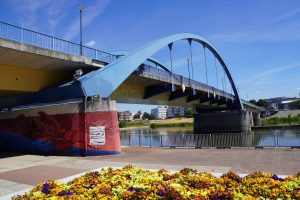
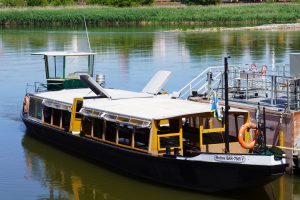
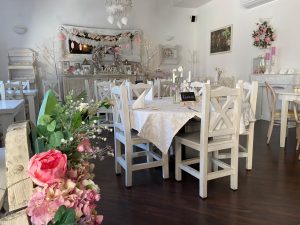
Leave a Reply